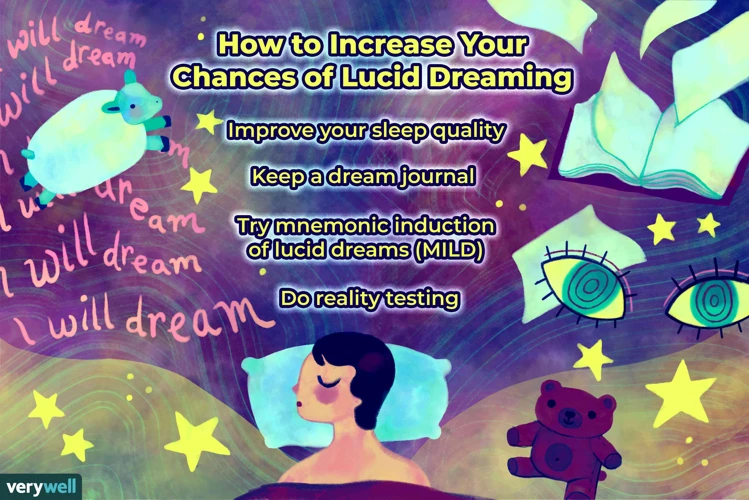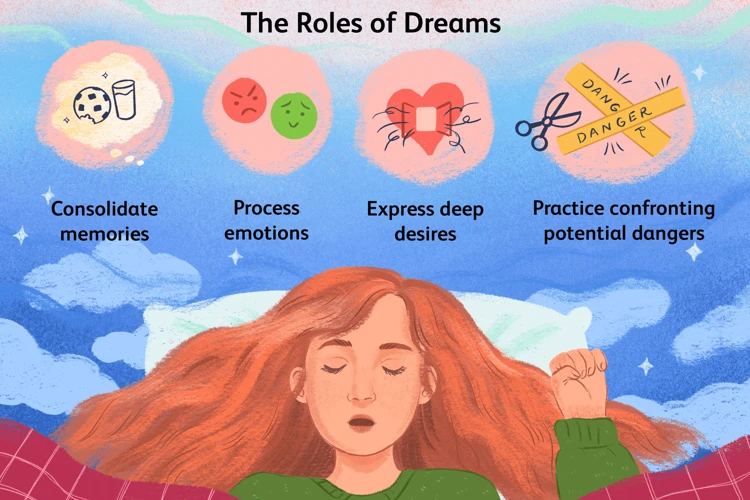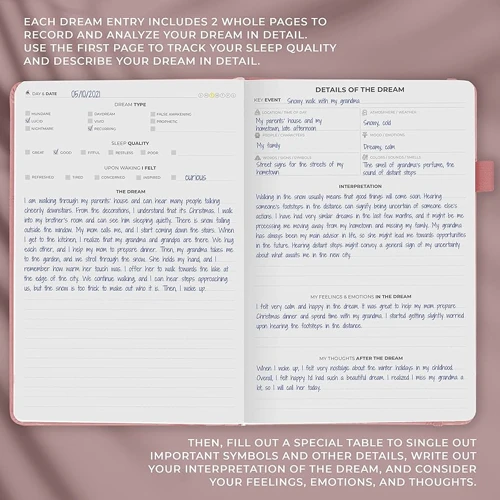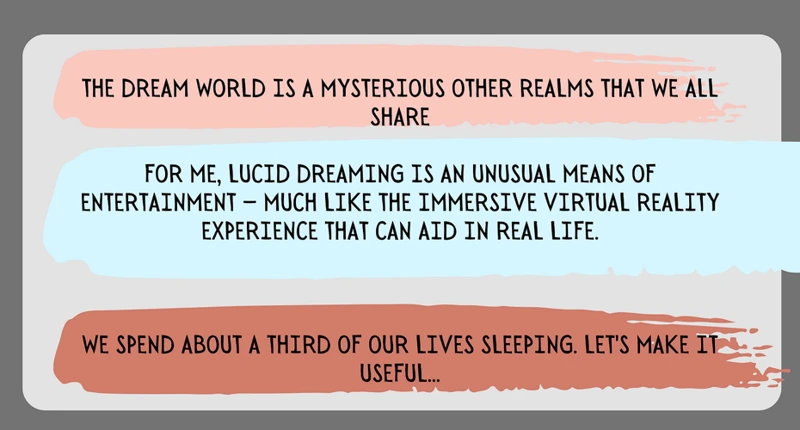Imagine being able to enter a world where you have complete control over your dreams, where you can fly, explore fantastical landscapes, and interact with incredible characters. This is the realm of lucid dreaming, a phenomenon that allows individuals to become aware that they are dreaming and actively participate in shaping their dreams. One powerful tool for inducing lucid dreams is meditation. By combining the practice of meditation with lucid dreaming techniques, you can enhance your ability to become aware of and control your dreams. In this article, we will explore the fascinating connection between meditation and lucid dreaming, as well as provide step-by-step guidance on how to use meditation to induce lucid dreams. So, get ready to embark on an extraordinary journey into the realm of the unconscious mind.
What is Lucid Dreaming?

Lucid dreaming is a remarkable state of consciousness where an individual becomes aware that they are dreaming while still in the midst of the dream itself. In a lucid dream, the dreamer can actively participate and manipulate the dream environment. This heightened state of self-awareness opens up incredible possibilities for self-exploration, creativity, and personal growth. Lucid dreaming allows individuals to break free from the limitations of the waking world and experience a realm where anything is possible. Whether you desire to fly among the stars or have conversations with historical figures, lucid dreaming can provide an extraordinary playground for your imagination. To learn more about the fascinating world of dreams and how meditation can enhance your lucid dreaming experiences, check out our article on exploring dreams through meditation.
Definition and Explanation
Lucid dreaming is a state of consciousness in which a person becomes aware that they are dreaming while still in the midst of the dream. This heightened self-awareness allows individuals to recognize that the events, people, and surroundings within the dream are not part of their waking reality. Lucid dreams can vary in clarity and control, ranging from a mild awareness that one is dreaming to a vivid and highly controllable dream state. This phenomenon has fascinated philosophers, psychologists, and spiritual practitioners for centuries due to its potential for self-discovery, exploration, and personal growth. Lucid dreaming offers a unique opportunity to tap into the realms of the unconscious mind and experience a world limited only by one’s imagination. To learn more about how to cultivate lucid dreams through meditation and establish a deeper connection with your dreams, check out our article on creating a dream meditation ritual for deeper insight. Additionally, practicing regular meditation can enhance dream recall, allowing individuals to more easily remember and analyze their dreams. To delve deeper into the interplay between meditation and dream recall, be sure to read our article on meditation for improved dream recall.
Benefits of Lucid Dreaming
Lucid dreaming offers a range of benefits that extend beyond the realm of imagination. Here are some of the remarkable advantages:
1. Self-Exploration: Lucid dreams provide a unique opportunity to explore your inner self, gaining insights into your desires, fears, and subconscious patterns. It allows you to delve into your own psyche and gain a greater understanding of your emotions and motivations.
2. Problem Solving: Through lucid dreaming, you can confront and solve problems in a safe and controlled environment. By actively engaging with challenging situations in your dreams, you can enhance your problem-solving skills and unleash your creativity.
3. Skill Enhancement: Lucid dreaming can be a useful tool for practicing and improving skills. Athletes, artists, and individuals seeking personal growth can use lucid dreams to rehearse and refine their techniques without facing physical limitations.
4. Emotional Healing: Lucid dreaming provides a platform for emotional healing and trauma resolution. By consciously entering traumatic dream scenarios, individuals can confront and process their emotions, leading to healing and personal growth.
5. Creative Inspiration: Lucid dreaming can be a wellspring of creativity, offering endless possibilities for artists, writers, and inventors. Exploring vivid dreamscapes can unlock new ideas, perspectives, and inspiration for various creative endeavors.
6. Recreational Enjoyment: Simply put, lucid dreaming is incredibly fun. It allows you to enjoy experiences that might be impossible or impractical in waking life, such as flying, teleportation, or engaging in fantastical adventures. Lucid dreaming offers a thrilling form of entertainment right in the realm of your subconscious.
From self-exploration and problem-solving to emotional healing and creative inspiration, the benefits of lucid dreaming are vast and diverse. Through the practice of meditation, you can enhance your ability to enter and navigate the lucid dream state, opening up a world of possibilities for personal growth and exploration.
The Connection Between Meditation and Lucid Dreaming

The connection between meditation and lucid dreaming is rooted in the power of mindfulness and heightened awareness. Both practices involve cultivating a deep sense of presence and focusing the mind. When we meditate, we train our minds to become more attentive and aware of the present moment. This increased awareness naturally carries over into our dream state, making it easier to recognize when we are dreaming.
Meditation also enhances our ability to stay present and maintain focus. This is crucial for lucid dreaming, as it requires being fully conscious within the dream and not getting swept away by the storyline. By regularly practicing meditation, we develop the skills to maintain a clear and focused mind, allowing us to stay lucid and in control while dreaming.
Another important aspect of the connection between meditation and lucid dreaming is the development of introspection and self-awareness. Through meditation, we learn to observe our thoughts, emotions, and experiences without judgment. This introspective mindset translates seamlessly into the dream world, where we can become more aware of our thoughts and emotions within the dream and make intentional choices based on that awareness.
Additionally, meditation can help us quiet the chatter of the mind and cultivate a sense of calmness and relaxation. This relaxed state of mind is conducive to a restful sleep, which can lead to more vivid and memorable dreams. By incorporating meditation into our daily routine, we create a conducive environment for lucid dreaming to occur.
The connection between meditation and lucid dreaming lies in their shared focus on mindfulness, heightened awareness, self-awareness, and the ability to maintain a calm and focused mind. By practicing meditation regularly, we develop the skills and mindset necessary to enhance our ability to become aware within our dreams and fully participate in them.
Preparing for Lucid Dreaming through Meditation

To prepare for lucid dreaming through meditation, there are a few key steps you can take. First, start by creating a dream journal to record and track your dreams. This will help you become more aware of your dream patterns and provide valuable insights. Next, establish a regular meditation routine to cultivate mindfulness and increase your self-awareness. Consistency is key when it comes to meditation, so aim for a daily practice. You can use various techniques such as mindfulness meditation, visualization meditation, or mantra meditation to deepen your focus and relaxation. By incorporating meditation into your daily routine, you’ll be enhancing your mental clarity and setting the stage for lucid dreaming. For more guidance on creating a dream journal and establishing a meditation routine, refer to our article on creating a dream meditation ritual for deeper insight.
Creating a Dream Journal
Creating a dream journal is an essential step in preparing for lucid dreaming through meditation. A dream journal serves as a valuable tool for recording and analyzing your dreams, helping you develop a deeper understanding of your dream patterns and themes. Start by keeping a journal or notebook next to your bed, easily accessible upon waking. As soon as you wake up, grab your journal and start writing down whatever fragments, images, or emotions from your dream you can recall. Be sure to include as much detail as possible, even if the memories feel fleeting or hazy. Use descriptive language to capture the essence of your dreams. You can note down the setting, characters, events, and any emotions or sensations you experienced. Highlight recurring symbols or themes that stand out to you. Over time, this practice will help improve your dream recall, as your mind becomes more attuned to remembering your dreams. By consistently recording your dreams in a journal, you will notice patterns and connections between your dreams and your waking life. This increased self-awareness can be invaluable in recognizing dream signs, which are unique cues that often appear in your dreams. By identifying these dream signs, you can train yourself to recognize when you are dreaming, ultimately increasing your chances of becoming lucid. To gain more insights into the benefits of keeping a dream journal and how it can enhance your lucid dreaming practice, check out our article on creating a dream journal for deeper insight.
Establishing a Meditation Routine
To establish a solid meditation routine that supports your lucid dreaming practice, consistency is key. Begin by designating a specific time and place for your meditation sessions. This creates a dedicated space that is associated with relaxation and focus. Choose a quiet and comfortable location where you can sit undisturbed for the duration of your meditation practice. It’s important to find a posture that allows you to be alert yet relaxed, such as sitting cross-legged on a cushion or in a chair with a straight spine. Start with shorter sessions, around 10-15 minutes, and gradually increase the duration as you become more comfortable. Consistently practicing meditation before bed can be particularly beneficial for lucid dreaming, as it helps to cultivate a focused and calm mind. Additionally, consider incorporating meditation into your daily routine by linking it with another activity, such as brushing your teeth or making a cup of tea. This association can help reinforce the habit of regular meditation. Experiment with different meditation techniques, such as mindfulness, visualization, or mantra meditation to see what resonates with you the most. By establishing a consistent and personalized meditation routine, you create a foundation for deepening your connection to your dreams and enhancing your potential for lucid dreaming.
Meditation Techniques for Lucid Dreaming

There are various meditation techniques that can be used to enhance the likelihood of experiencing lucid dreams. Mindfulness meditation is a popular technique that involves focusing your attention on the present moment, increasing your awareness of your thoughts, feelings, and senses. By cultivating mindfulness during your waking hours, you can develop a greater sense of self-awareness that can carry over into your dreams. Another technique is visualization meditation, where you mentally imagine and visualize specific dream scenarios or the act of becoming aware within a dream. This practice helps train your mind to recognize dream signs and triggers when you are asleep. Lastly, mantra meditation involves repeating a specific word or phrase, such as “I am aware within my dreams,” to reinforce the intention of becoming lucid while dreaming. Regular practice of these meditation techniques can heighten your self-awareness and improve your chances of experiencing lucid dreams.
1. Mindfulness Meditation
Mindfulness meditation is a powerful technique that can greatly enhance your ability to induce lucid dreams. This practice involves bringing your full attention to the present moment, focusing on your breath or bodily sensations, and observing your thoughts and emotions without judgment. By cultivating mindfulness during your waking hours, you are training your awareness and developing the ability to carry this heightened state of consciousness into your dreams.
To practice mindfulness meditation for lucid dreaming, find a quiet and comfortable space where you can sit or lie down without distractions. Close your eyes and take a few deep breaths to center yourself. Begin by directing your attention to your breath, feeling the sensation of the inhalation and exhalation. Notice how the breath moves in and out of your body, and simply observe this process without trying to control it.
As you continue to focus on your breath, thoughts and sensations may arise in your mind. Instead of getting caught up in them, gently acknowledge their presence and let them go, returning your attention to the breath. Cultivate a sense of spaciousness and openness in your awareness, allowing your thoughts to come and go without attachment.
It is important to practice mindfulness meditation consistently to train your mind to be more alert and aware throughout the day and, eventually, during your dreams. By integrating mindfulness meditation into your daily routine, you will create a strong foundation for lucid dreaming. Remember, lucid dreaming is a skill that requires patience and practice, so be persistent and gentle with yourself as you explore this incredible realm of consciousness.
In addition to mindfulness meditation, there are other meditation techniques that can also be utilized to enhance lucid dreaming experiences. These techniques will be further discussed in the following sections of this article.
2. Visualization Meditation
Visualization meditation is a powerful technique for enhancing lucid dreaming abilities. This practice involves using the power of your imagination to visualize vivid and detailed scenes in your mind’s eye. Through consistent visualization meditation, you can strengthen your ability to create and control visual imagery, which is essential for lucid dreaming.
To begin practicing visualization meditation, find a quiet and comfortable space where you can sit or lie down without distractions. Close your eyes and take a few deep breaths to relax your body and mind. Start by visualizing a simple object or scene, such as a serene beach or a glowing candle. Try to see the details as clearly as possible, focusing on colors, shapes, and textures. As you continue to practice, gradually increase the complexity of the visualizations.
Incorporating affirmations and intentions into your visualization meditation can also be beneficial. You can repeat affirmations such as “I am aware within my dreams” or “I can control my dream experiences” to reinforce your intention to have lucid dreams. Engage all of your senses during the visualization, not just sight. Imagine the feeling of warm sand between your toes or the gentle sound of ocean waves crashing against the shore.
Consistency and regular practice are key when it comes to visualization meditation for lucid dreaming. Aim for daily sessions of 10-20 minutes, gradually increasing the duration as you become more comfortable. Over time, you will notice improvements in your ability to visualize and control dream imagery.
Remember, visualization meditation is a skill that requires patience and perseverance. It may take time to see significant results, but with dedication and practice, you can enhance your visualization abilities and increase your chances of having lucid dreams. So, close your eyes, let your imagination soar, and embark on a journey of inner exploration through visualization meditation.
3. Mantra Meditation
Mantra meditation is a powerful technique that can aid in inducing lucid dreams. In this form of meditation, the practitioner repeats a specific word or phrase, known as a mantra, to focus and calm the mind. The repeated mantra acts as an anchor, helping to redirect the mind away from distracting thoughts and into a state of deep relaxation and concentration. To use mantra meditation for lucid dreaming, begin by finding a comfortable and quiet space to sit or lie down. Choose a mantra that resonates with you, such as “I am aware in my dreams” or “I control my dreams.” Close your eyes and take several deep breaths to relax your body and mind. Then, begin repeating your chosen mantra silently or out loud, allowing the words to flow naturally and rhythmically. As you continue to repeat the mantra, let go of any attachment to thoughts or expectations, and simply observe the sensations and experiences that arise. Engaging in mantra meditation regularly can help enhance your overall self-awareness, dream recall, and chances of having lucid dreams. To delve deeper into the benefits of meditation on dream recall, explore our article on creating a dream meditation ritual for deeper insight.
Benefits of Using Meditation for Lucid Dreaming

Meditation offers a multitude of benefits when it comes to lucid dreaming. Firstly, it can significantly increase dream recall, allowing you to remember and document your dreams with greater clarity and detail. This heightened recall serves as a valuable resource for self-reflection and analysis, leading to deeper insights into your subconscious mind. Additionally, meditation enhances awareness in dreams, enabling you to recognize the dream state and trigger lucidity more easily. By cultivating mindfulness and presence through meditation, you become more attuned to the nuances of the dream environment, empowering you to take control and shape your dreams according to your desires. Meditation grants you greater dream control, enabling you to manipulate dream scenarios, explore your inner landscape, and tap into your limitless creativity. The regular practice of meditation not only enhances your lucid dreaming abilities but also brings a sense of calm and tranquility to your waking life.
Increase Dream Recall
To enhance dream recall, meditation can be a powerful tool. By regularly practicing meditation, you can sharpen your awareness and improve your ability to remember your dreams. During meditation, you can cultivate a state of mindfulness that carries over into your dream state. This heightened awareness allows you to pay closer attention to the details and events of your dreams, making them easier to recall upon waking. A key technique for increasing dream recall through meditation is to incorporate a dream journal into your practice. After each meditation session, take a few moments to write down any dream fragments or impressions you may have. This process helps to solidify the connection between your waking and dreaming mind, making it easier for you to recall and remember your dreams in greater detail. Additionally, you can enhance your dream recall by setting a clear intention before each meditation session to remember your dreams. By consciously focusing on this intention, you send a powerful message to your subconscious mind, signaling your desire to remember your dreams upon awakening. Over time, with consistent meditation practice and the use of a dream journal, you will likely notice a significant improvement in your dream recall abilities. So, make sure to dedicate time to meditation and embrace the transformative power of improved dream recall.
Enhance Awareness in Dreams
Strong>Enhancing awareness in dreams is a key benefit of using meditation for lucid dreaming. When we are fully aware within a dream, we can make conscious choices and actively shape the dream experience. Here are some techniques to help you enhance your awareness in dreams through meditation:
1. Mindfulness Meditation: Practicing mindfulness meditation during the day can help you cultivate present-moment awareness, which can carry over into your dream state. Regular mindfulness meditation trains your mind to observe thoughts, emotions, and sensations without judgment. This heightened awareness can transfer to your dreams, allowing you to recognize dream signs and trigger lucidity.
2. Visualization Meditation: Visualization meditation involves creating vivid mental imagery. By regularly practicing visualization techniques, you can improve your ability to visualize and imagine objects, scenes, and even specific dream scenarios. This heightened ability to visualize can translate into a more vivid dream experience, making it easier for you to recognize when you are dreaming.
3. Mantra Meditation: Using a mantra during meditation can also help increase awareness in dreams. Choose a short, meaningful phrase or word that you can repeat silently or aloud during your meditation practice. The repetition of the mantra can help anchor your attention and mindfulness. Over time, this mindfulness training can spill over into the dream state, making you more likely to recognize and engage in lucid dreaming.
By incorporating these meditation techniques into your daily practice, you can cultivate a heightened state of awareness that will carry over into your dreams. With increased awareness, you will be more likely to recognize when you are in a dream, empowering you to become lucid and take control of your dream experiences.
Greater Dream Control
: One of the most exciting benefits of using meditation to induce lucid dreaming is the ability to have greater control over your dreams. When you are engaged in a lucid dream, you become the director, writer, and star of your own personal movie. Through a regular meditation practice, you can train your mind to maintain a sense of awareness while transitioning into the dream state. This increased awareness carries over into your dreams, allowing you to recognize when you are dreaming and exert control over the dream environment. With practice, you can learn to manipulate and shape the dream to suit your desires. Want to explore a tropical paradise? Simply imagine the beach and the palm trees materialize before your eyes. Want to confront a fear or overcome a challenge? You can create scenarios in the dream where you face and conquer those obstacles. The possibilities are boundless. By harnessing meditation techniques, such as visualization and concentration, you can enhance your ability to manifest your desires within the lucid dream realm. So, whether you want to experience thrilling adventures or delve into the depths of your subconscious mind, greater dream control through meditation can empower you to unlock a truly immersive and empowering dream experience.
Common Challenges and How to Overcome Them

Embarking on the journey of using meditation to induce lucid dreaming may come with its fair share of challenges. One common challenge is the difficulty of achieving lucidity in dreams. It can take time and practice to develop the awareness needed to realize that you are dreaming. To overcome this challenge, it is important to be patient and consistently practice the techniques discussed in this article. Another challenge that may arise is distractions during meditation, as thoughts and external stimuli can divert your focus. To address this, create a quiet and peaceful environment for your meditation practice, and gently bring your attention back to your chosen meditation object whenever distractions arise. Lastly, managing frustration and impatience is crucial as the journey towards lucid dreaming requires dedication and persistence. Remember to approach the process with a sense of curiosity and playfulness, celebrating even small successes along the way. By acknowledging and addressing these common challenges, you can navigate the path to lucid dreaming with greater ease and enjoyment.
Difficulty Achieving Lucidity
– Lack of dream recall: One common challenge in achieving lucidity is a limited ability to remember dreams. If you struggle to recall your dreams upon waking, it can be difficult to recognize the patterns and inconsistencies that may indicate a dream state. To improve dream recall, establish a consistent habit of recording your dreams in a dream journal. Write down any fragments or details you can remember, even if they seem insignificant. Over time, this practice will enhance your dream recall, making it easier to identify when you are dreaming.
– Inconsistent reality checks: Reality checks are techniques used to determine whether you are in a dream or waking state. By regularly performing reality checks throughout the day, you train your mind to question reality, increasing the likelihood of doing the same within a dream. However, inconsistent or sporadic practice of reality checks can hinder progress. To overcome this challenge, establish a routine for performing reality checks at regular intervals throughout the day, such as every hour or whenever you encounter a specific trigger, such as seeing a specific object or entering a new environment.
– Lacking dream signs: Dream signs are recurring themes, situations, or objects that frequently appear in your dreams. By identifying your personal dream signs, you can use them as cues to trigger lucidity. However, recognizing dream signs can be challenging, especially if you have difficulty recalling dreams. To address this, focus on improving your dream recall and pay attention to any recurring elements or experiences that you can identify in your dreams. Gradually, you will become more adept at recognizing your personal dream signs and increasing your chances of achieving lucidity.
– Impatience and frustration: It is natural to feel impatient or frustrated when progress towards achieving lucidity is slow. However, these negative emotions can hinder the process. It is important to approach lucid dreaming with patience and a positive mindset. Remember that it takes time and practice to develop the skills needed for lucid dreaming. Consistent meditation and dedicated effort will gradually improve your ability to achieve lucidity. Take each step as a learning experience and celebrate even the smallest successes along the way.
Distractions During Meditation
Distractions during meditation can be a common challenge, but with practice and a few strategies, they can be effectively managed. One of the main distractions that can arise during meditation is a wandering mind. Thoughts, worries, and to-do lists may intrude on your meditation practice, pulling your attention away from the present moment. When this happens, it’s important to remember that it is a normal part of the meditation process. Instead of trying to forcefully suppress these thoughts, acknowledge them without judgment and gently redirect your focus back to your meditation object, such as your breath or a mantra. Another distraction that may arise is external noise. Whether it’s the sound of traffic outside or household activities happening around you, these noises can make it challenging to maintain concentration. Consider using earplugs or playing calming music or nature sounds to drown out external distractions. If your meditation environment is too noisy, you may also try finding a quieter space or using a white noise machine to create a more peaceful atmosphere. Additionally, physical discomfort or restlessness can also be distracting during meditation. Find a comfortable and supportive posture that allows you to be relaxed yet alert. If you experience discomfort, such as stiffness or pain, make gentle adjustments to find a more comfortable position. Remember to be patient with yourself and approach distractions with a non-judgmental attitude. Over time, with consistent practice, you will develop greater focus and resilience against distractions during meditation.
Managing Frustration and Impatience
Managing frustration and impatience during the practice of meditation for lucid dreaming can be challenging but essential for success. Here are some strategies to help you navigate these feelings:
1. Set realistic expectations: Understand that inducing lucid dreams through meditation may take time and practice. It’s important to approach the process with patience and allow yourself to progress at your own pace.
2. Accept the ebb and flow: Like any practice, meditation and lucid dreaming have their ups and downs. Some days you may experience vivid lucid dreams, while other days may feel less productive. Embrace the journey and trust that progress is being made, even during periods of perceived stagnation.
3. Cultivate mindfulness: Use mindfulness techniques to bring awareness to your frustrations and impatience. Notice these emotions without judgment and gently redirect your focus back to your meditation practice. Remind yourself that these feelings are normal and temporary.
4. Find support: Connect with like-minded individuals who share an interest in lucid dreaming and meditation. Join online communities, participate in forums, or seek out local groups to share experiences, seek advice, and find encouragement during challenging times.
5. Practice self-compassion: Be kind to yourself throughout the process. Understand that setbacks and frustrations are natural and part of the learning curve. Treat yourself with compassion and remind yourself that dedication and patience are key ingredients for success.
By implementing these strategies, you can effectively manage frustration and impatience during your meditation practice and maintain a positive mindset that supports your journey towards inducing lucid dreams. Stay persistent, and with time, you will experience the rewards of this transformative practice.
Tips for Successfully Inducing Lucid Dreams through Meditation

Achieving lucid dreams through meditation requires dedication and practice. To maximize your chances of success, here are some tips to consider:
1. Consistency: Establish a regular meditation routine and stick to it. Consistency is key in training your mind to become more aware during the dream state.
2. Set Intentions: Before you begin your meditation session, set a clear intention to have a lucid dream. Visualize yourself becoming aware within a dream and affirm your intent to experience lucidity.
3. Dream Journal: Keep a dream journal by your bedside and record your dreams as soon as you wake up. This practice helps improve dream recall and allows you to spot recurring patterns or dream signs that can trigger lucidity.
4. Reality Checks: Incorporate reality checks into your waking life. Perform simple tests throughout the day to determine if you are dreaming or awake. When these become habitual, you are more likely to perform them in a dream, triggering lucidity.
5. Use Guided Meditations: Explore guided meditations specifically designed to induce lucid dreams. These meditations often utilize visualization techniques and affirmations to help you enter a lucid dream state.
6. Combine Meditation with Other Techniques: Experiment with combining meditation with other lucid dreaming techniques, such as wake-back-to-bed (WBTB) or mnemonic induction of lucid dreams (MILD). This synergy can amplify your chances of having a lucid dream.
7. Patience and Persistence: Lucid dreaming may not happen immediately, and it requires patience and persistence. Continue practicing meditation and implementing lucid dreaming techniques, and over time, you are likely to experience the incredible world of lucid dreaming.
Remember, the key is to maintain a focused and positive mindset throughout your practice. By following these tips and staying committed to the process, you will increase your chances of successfully inducing lucid dreams through meditation.
Advanced Techniques for Experienced Practitioners
For experienced practitioners of lucid dreaming and meditation, there are advanced techniques that can take your exploration to new levels. One such technique is the Wake-Back-to-Bed (WBTB) method. This involves waking up after a few hours of sleep and then going back to sleep with the intention of entering a lucid dream. By interrupting your sleep pattern, you increase the likelihood of entering a dream directly from the waking state. Another advanced technique is Reality Testing, where you regularly question whether you are dreaming or awake throughout your daily life. This habit carries over into your dreams, making it more likely that you will recognize when you are dreaming and become lucid. Experimenting with these advanced techniques can provide new opportunities for lucid dreaming and unlock deeper levels of awareness.
Wake-Back-to-Bed Method
The Wake-Back-to-Bed (WBTB) method is an advanced technique that can greatly increase the chances of experiencing a lucid dream. This method involves waking up from sleep in the middle of the night and then going back to bed with the intention of entering a lucid dream. Here’s a step-by-step breakdown of how to practice the WBTB method for inducing lucid dreams:
1. Set an alarm: Before going to sleep, set an alarm to wake you up after approximately 4-6 hours of sleep. This timing is important as it corresponds to the REM (rapid eye movement) sleep stage where dreams are most likely to occur.
2. Stay awake mentally: When the alarm goes off, resist the temptation to snooze. Instead, wake up fully and engage in a quiet and relaxing activity that keeps your mind alert and focused. You can read a book, meditate, or simply sit quietly and reflect.
3. Visualize your lucid dream: During this wakeful period, take a few moments to visualize yourself becoming lucid in a dream. Imagine yourself recognizing the dream state, becoming aware of your surroundings, and actively engaging with the dream content. This visualization helps to set a clear intention for your upcoming lucid dream.
4. Go back to bed: After approximately 20-30 minutes of being awake, return to bed with the intention of experiencing a lucid dream. As you lie down, remind yourself that you will become aware that you are dreaming and that you will have full control over the dream.
5. Perform reality checks: As you drift back to sleep, periodically perform reality checks to reinforce your intention of becoming lucid in the dream. Reality checks involve questioning the nature of your reality by examining your surroundings, counting your fingers, or trying to push your finger through your palm. These checks will become habitual and carry over into your dreams, increasing the likelihood of becoming lucid.
6. Record your dreams: Upon waking up in the morning, immediately jot down any dreams you can recall in your dream journal. This step is essential for improving dream recall and increasing your overall dream awareness.
The Wake-Back-to-Bed method can be highly effective in inducing lucid dreams due to the combination of increased REM sleep and heightened mental alertness. However, it may take time and practice to master this technique, so be patient and persistent. With regular application, the WBTB method can be a valuable tool in your lucid dreaming practice.
Reality Testing
Reality testing is a fundamental technique used by experienced lucid dreamers to verify whether they are in a dream or the waking world. The goal is to develop the habit of regularly questioning reality, which will eventually carry over into your dreams. By performing reality tests throughout the day, you train your mind to question the nature of your experience and increase the likelihood of becoming lucid in a dream. There are various reality testing methods you can try, such as examining your surroundings, attempting to read text or telling time, or trying to push your hand through a solid object. Consistency and mindfulness are key when practicing reality testing. It’s important to truly question the nature of your reality, rather than simply going through the motions. Additionally, you can combine reality testing with meditation by setting intentions before and after each test, bringing focus and awareness to the present moment. Remember that cultivating a habit of reality testing takes time and persistence, but the rewards of experiencing lucid dreams make it well worth the effort. So, don’t be afraid to question reality and explore the depths of your dreamscape.
Conclusion
In conclusion, the practice of meditation can be a powerful tool for inducing and enhancing lucid dreaming experiences. By incorporating meditation techniques into your daily routine and maintaining a dream journal, you can increase your dream recall, enhance your awareness within dreams, and gain greater control over your dream experiences. Mindfulness meditation, visualization meditation, and mantra meditation are all effective techniques to try during your meditation practice. Additionally, overcoming common challenges such as difficulty achieving lucidity, distractions during meditation, and managing frustration and impatience can greatly improve your success in using meditation for lucid dreaming. For experienced practitioners, advanced techniques like the Wake-Back-to-Bed method and reality testing can further enhance the frequency and vividness of lucid dreams. So, continue to explore the fascinating realm of lucid dreaming through meditation, and embark on a journey of self-discovery, creativity, and limitless possibilities.
Frequently Asked Questions
What is the definition of lucid dreaming?
Lucid dreaming is a state of consciousness in which an individual is aware that they are dreaming while still inside the dream itself.
Can anyone learn to have lucid dreams?
Yes, anyone can learn to have lucid dreams. It may take practice and patience, but with the right techniques and mindset, anyone can experience this extraordinary phenomenon.
What are the benefits of lucid dreaming?
Lucid dreaming offers a range of benefits including enhanced creativity, opportunities for self-exploration, overcoming fears and nightmares, practicing real-life skills, and even improving problem-solving abilities.
How does meditation help with lucid dreaming?
Meditation helps with lucid dreaming by increasing your self-awareness, improving focus and concentration, enhancing dream recall, and cultivating a calm and relaxed mind that is receptive to lucid dreaming experiences.
What is a dream journal and why is it important?
A dream journal is a notebook or digital record where you write down your dreams immediately upon waking. It is important because it helps to improve dream recall, identify dream patterns, and develop a closer connection to your dreams.
What is mindfulness meditation and how does it help with lucid dreaming?
Mindfulness meditation involves paying attention to the present moment without judgment. It helps with lucid dreaming by strengthening your ability to stay present, which translates into being aware of the dream state while dreaming.
How does visualization meditation assist in inducing lucid dreams?
Visualization meditation involves creating vivid mental images in your mind. It assists in inducing lucid dreams by training your mind to visualize becoming aware in a dream and engaging in specific dream scenarios.
What is mantra meditation and how does it relate to lucid dreaming?
Mantra meditation involves repeating a particular word or phrase to focus the mind. It relates to lucid dreaming by using mantras specifically designed to trigger lucidity and increase self-awareness during dreams.
Are there any challenges to expect when using meditation for lucid dreaming?
Yes, some common challenges may include difficulty achieving lucidity, distractions during meditation, and managing frustration and impatience. However, with perseverance and practice, these challenges can be overcome.
What are some advanced techniques for experienced practitioners of lucid dreaming?
Some advanced techniques for experienced practitioners include the Wake-Back-to-Bed method, which involves briefly waking up during the night to induce lucid dreams, and reality testing, where you regularly check if you are dreaming while awake to increase lucidity in dreams.








